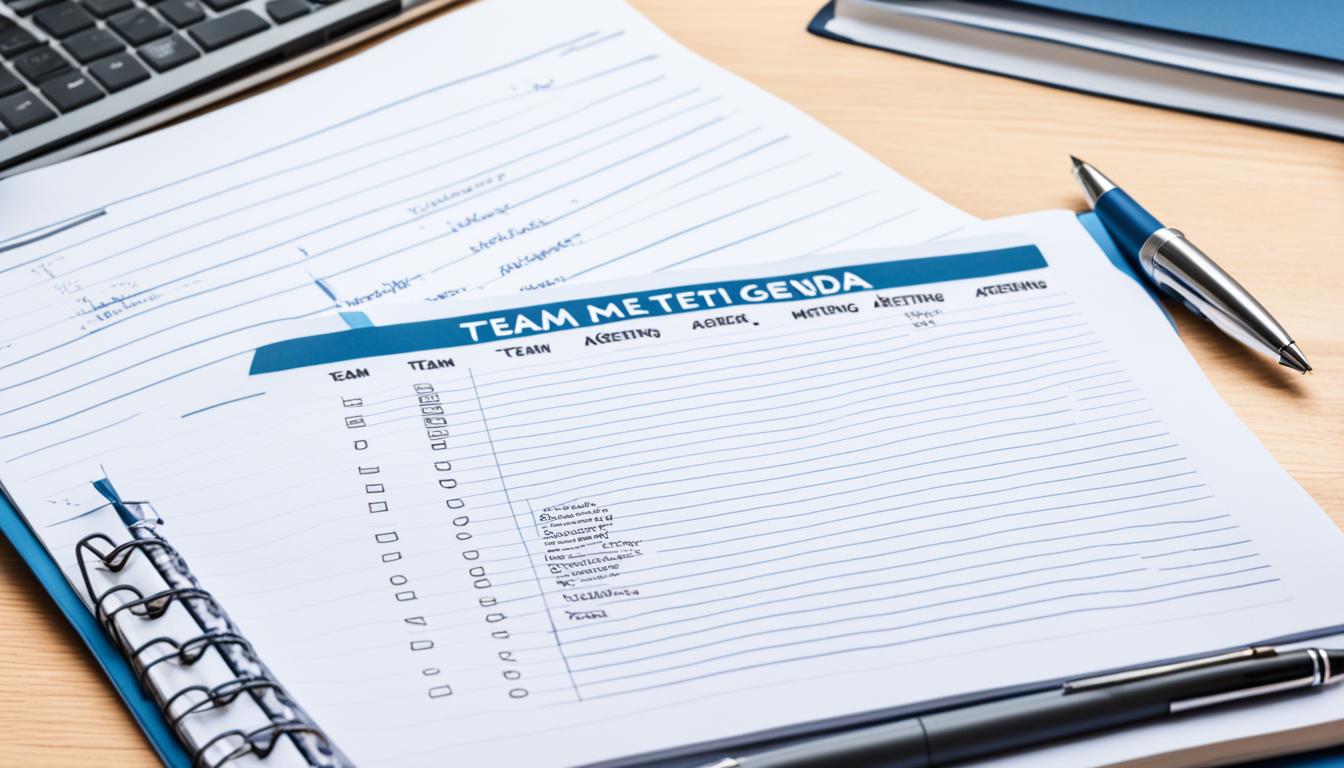Weekly team meetings play a major role in team communication, alignment, and momentum. When the entire team gathers—whether in in-person meetings, hybrid check-ins, or virtual meetings through tools like Microsoft Teams—it’s an opportunity to strengthen collaboration among team members, clarify current projects, review progress, and build relationships. These moments help build camaraderie and allow other team members to stay aligned.
Jigar Desai, Chief Technology Officer at Calendly, says to check if meetings are still needed. Jessica Gilmartin, Chief Revenue Officer at Calendly, stresses the need for a meeting plan. This helps everyone know what to expect and what to do.
But weekly team meetings can quickly lose their spark when they lack direction. The average employee spends far too much time in unproductive work meetings, and the average employee spends nearly half their workweek trying to stay coordinated. That’s why using the right team meeting ideas, keeping a clear plan, and designing a more productive meeting experience makes all the difference.

Key Takeaways:
- Question the relevance of recurring meetings regularly.
- Define a clear team meeting agenda and effective meeting agenda with SMART goals.
- Schedule meetings during natural breaks and include buffers.
- Set clear meeting objectives and maintain focus throughout.
- Engage in pre-meeting preparation for better contributions.
Define the Purpose and Objectives of the Meeting for Employee Engagement
A successful team meeting starts with clarity. With millions of work meetings conducted every day, setting a purpose helps the whole team stay aligned, engaged, and prepared—ensuring participants engaged throughout the session.
Clear goals help keep everyone on the same page. They’re key to making meetings successful and encourage participation organically.

Clarify the Meeting’s Goals
Setting goals before the meeting gives everyone a clear direction. This can boost productivity by 75%. Goals should be SMART: Specific, Measurable, Achievable, Relevant, and Time-bound.
This way, teams can track progress and stay focused, helping assess progress efficiently.
Communicate the Purpose to Attendees
Telling people why they’re meeting is crucial for their involvement. Jeff Bezos stopped using PowerPoint at Amazon to avoid bad meetings. When people know the meeting’s aim, they work better.
Sharing a clear agenda before the meeting helps everyone come ready. This leads to better meetings.
Determine Desired Outcomes
Knowing what you want from a meeting is key. Meetings vary, like daily updates, weekly team talks, and looking back on projects. Each has its own goals.
Weekly meetings set priorities and solve problems. Retrospectives look at past projects to improve future ones. Knowing the meeting type and roles helps everyone focus.
Good meetings need careful planning and clear communication. Clear goals increase engagement and teamwork. This makes sure everyone works towards the same goals and helps create more engaging team meetings.
Create a Structured Agenda with General Announcements
Making a structured agenda is key for managing time well and keeping meetings productive. It sets the meeting’s goals, keeps everyone involved, and avoids wasting time. With half of meetings being a waste, a good agenda can cut down on waste.

Include Relevant Topics
A good agenda lists all important topics for the meeting. This makes sure all points are covered and keeps talks on track. Adding different items, like big plans and updates, helps everyone work towards the company’s goals.
Assign Time Limits to Each Agenda Item
Managing time in meetings means setting time limits for each item. Since people waste about 31 hours a month in meetings, time limits keep talks focused and boost productivity. They help focus on important topics and stop one topic from taking over.
Designate an Owner for Each Topic
Having someone in charge of each topic makes meetings more accountable. Each item should have a person who leads the discussion. This makes sure everyone is ready and keeps the meeting on track. It also makes sure all important points are covered.
Here’s an example of a structured meeting agenda to guide your planning:
TimeTopicOwner0-10 minReview Metrics and KPIsManager10-20 minProject UpdatesTeam Leads20-30 minChallenges and RoadblocksTeam Members30-40 minStrategy PlanningDepartment Heads40-45 minQ\&A and Action ItemsAll Attendees
Using a consent agenda can save time by grouping common topics together. Sharing the agenda a day before helps everyone prepare. These steps can cut the $37 billion a year US businesses lose to bad meetings.
Assign Meeting Roles for Professional Development
Assigning roles in a meeting makes it run smoothly, efficiently, and productively. It spreads out tasks and helps people learn leadership skills. Important roles like the Facilitator, Timekeeper, Note-taker, and Vibes Watcher are key to a successful meeting.
Facilitator
A Facilitator is key to a good meeting. They keep the talk focused and on track. They manage discussions, get everyone involved, and solve conflicts. Good facilitators listen well, ask smart questions, summarize, and manage time well.
Timekeeper
A Timekeeper keeps the meeting on schedule. They watch the clock for each item and tell the facilitator when it’s time to move on. This keeps the meeting organized and on time.
Note-taker
The Note-taker writes down important points from the meeting. This includes discussions, decisions, and what needs to be done next. Good notes help everyone stay informed and keep track of tasks.
Vibes Watcher
The Vibes Watcher watches how people feel and interact in the meeting. They notice the mood and energy. If they see things getting off track, they tell the Facilitator to adjust, keeping the meeting positive and inclusive.
Role Responsibilities Skills Required Facilitator Moderates discussion, manages conflicts, ensures participation. Active listening, strategic questioning, empathy, and time management.TimekeeperTracks time, notifies facilitator to keep to schedule. Attention to detail, punctuality, and coordination.Note-takerDocuments key points, decisions, and action items.Organizational skills, accuracy, and clarity in writing. Vibes Watcher Observes nonverbal cues, maintains positive atmosphere. Observational skills, empathy, and adaptability.
Defining these roles clearly makes meetings better structured, more engaging, and productive. It helps meetings run smoothly and makes sure everyone knows what to do. This way, everyone is ready, involved, and helps meet the meeting’s goals.
Select the Attendees Carefully
Choosing who comes to meetings is key to making them productive. 62% of meeting participants say who comes affects how well meetings do. Picking the right people means everyone is ready to talk and listen.

Also, 75% of employees think having an agenda helps meetings work better. When you pick who comes, everyone is ready to help with the topics at hand.
Here’s why picking the right people is important:
- Purpose Alignment: 68% of workers say clear goals are key for good meetings. Pick people who fit the goal to keep things on track.
- Decision-Making: Add people who can make decisions to speed things up and cut down on extra meetings.
- Engagement Levels: 46% of employees say changing up who comes keeps things interesting. Switch up the team based on what needs to be done.
- Productive Discussions: 71% of workers value being flexible in meetings. Make sure everyone can join in, even if things change.
To pick the right people for meetings, think about the type of meeting and how long it should last: Meeting CadenceIdeal LengthDaily Stand-up10-15 minutesWeekly Sync30 minutesBi-weekly Deep Dive1 hourQuarterly Strategy90 minutes or longer In conclusion, 79% of employees like meetings where everyone gets a chance to speak. Picking the right people for meetings makes them more productive and lets everyone’s ideas shine through.
Start and End on Time
In today’s fast-paced work world, punctuality is key to managing meetings well. Teams using the EOS® system often rate their meetings high, showing how important timing is. They give meetings scores of sixes, sevens, and eights, showing there’s room to get better. Starting and ending meetings on time is a key sign of respect for time.

Starting meetings on time with Good News sets a positive tone. It helps build a culture of respect for time. Teams should quickly go through the first five agenda items to keep things moving.
Teams aim to solve main problems quickly in meetings. They aim for a score of 8 out of 10 in Level 10 meetings. Using tools like the EOS Toolbox™ helps teams plan and solve issues better.
Some teams prefer short meetings of 10-15 minutes. Others like 90-minute sessions. Tools like Clockwise help schedule meetings without wasting time.
Level 10 Meetings follow a strict structure. They start with weekly wins and end with Q\&A. Each part of the meeting has a set time, keeping things focused and productive. This way, meetings start and end on time, keeping the workday smooth.
Meeting SegmentDurationSegue5 minutesScorecard Review5 minutesRock Review5 minutesHeadlines5 minutesTo-Do Lists5 minutesIDS60 minutesConclude5 minutes
Creating a culture of being on time and meeting discipline makes meetings better and boosts work satisfaction. Managing meeting times well shows respect for everyone’s time. It helps create a place where everyone works well together.
Set the Meeting Tone
Starting a meeting right sets the stage for success. It’s key to make the meeting feel positive and boost team spirit. Using icebreakers, humor, and celebrating wins helps create a team vibe.

Begin with an Icebreaker or Humor
Starting with a fun icebreaker or joke can make everyone feel more at ease. A Harvard Business Review study found 71% of senior managers think meetings are a waste of time. A fun start can change that and make the meeting more productive.
Encourage a Positive Atmosphere
Keeping the meeting positive is vital. Since 76% of people prefer in-person meetings, it’s important to make them supportive and open. Using inclusive methods can lift team spirits and make meetings better.
Recognize Achievements
Shouting out team and individual wins can really lift morale. Data shows 34% of workers get motivated by feeling valued. Celebrating wins not only keeps the mood up but also shows the team’s progress and unity.
Encourage Participation and Set Guidelines
In any productive meeting, it’s key to get everyone involved. Encouraging open talk makes the meeting better. Setting clear rules makes sure everyone is heard and valued.
Promote Open Communication
For a meeting to work, everyone must feel free to speak up. This means making a safe space for sharing thoughts. By letting everyone talk, you get a full view of ideas.
Adding time for questions and talks in the plan helps everyone join in. This builds a culture of good communication.
Establish Ground Rules
Starting with some basic rules keeps things running smoothly. These rules could be about how to bring up issues or who talks next. They help avoid confusion and keep the talk focused.
Sharing the meeting plan early lets everyone get ready. This way, they can really take part and make the most of the meeting.
Handle Conflicts Professionally
Dealing with conflicts well is key to a good meeting. Having a plan for solving problems helps turn disagreements into chances to learn. This could mean having someone fair to help out or setting aside time to talk things over.
Putting top items on the agenda and handling conflicts well keeps the meeting positive. This makes for a better meeting atmosphere and prevents issues from affecting employee morale.
Strategies for Encouraging Participation, Benefits, Open Dialogue, Ensuring diverse perspectives are shared, Effective Communication, understanding, and clarity. Conflict Resolution: Maintains a constructive meeting environment. Ground Rules, Encourages respectful interactions, Pre-Meeting Agendas, Increases preparedness and efficiency
By pushing for open talk and clear rules, meetings become places for great communication and solving problems. This leads to a stronger and more united team.
Weekly Team Meeting Follow-up
Meetings don’t end when they close. Keeping up with progress is key for success. It helps everyone stay on track and communicate well.

Summarize Key Points and Action Items
It’s important to capture the main points and action items. After each meeting, summarize the key points. Clearly state who is responsible for each task. This makes sure everyone knows what to do next.
Distribute Meeting Notes Promptly
Sharing meeting notes quickly is crucial. Make sure to send them out within 24 hours of the meeting. This shows how important the info is and encourages quick action.
Assign Follow-up Responsibilities
Give action items to specific people with deadlines. This makes everyone clear on their tasks. Checking on these tasks in meetings keeps the team moving forward and shows goals are being met.
Here is a detailed look at the recommended meeting frequency and valuable statistics gathered:
TemplateViewsDownloads45-minute team meeting13,5364,36510-minute scrum team meeting9,1202,597Project kickoff meeting7,2591,783Brainstorming meeting7,1581,661First team meeting agenda1,360714
Weekly meetings keep teams connected and working well together. They help track progress and keep everyone focused on the team’s goals.
Conclusion
Using these tips can change your team meetings for the better. They will become more effective, engaging, and focused. Start by setting clear goals and a plan for the meeting. Make sure everyone knows their role and who’s there, which helps maintain a positive tone and improves how remote teams and remote employees collaborate during every meeting. Make sure everyone knows their role, who’s there, and what team leaders are responsible for.
Keep meetings on schedule and make them fun with icebreakers, or even a team building exercise or trivia game as a fun way to strengthen team bonding and keep employees engaged. Encourage everyone to speak up. Adding humor can make meetings better. Research shows that 37% of workers love getting recognized for their work. But, 65% haven’t been recognized in a year — another reason to celebrate achievements and share success stories.
It’s key to follow up after meetings. Summarize what was discussed and share the notes quickly, ensuring clear meeting minutes for all individual team members. Make sure everyone knows what they need to do next. For more tips on ending meetings well, check out this guide. Encourage teams to compare notes, reflect on weekly learnings, and engage employees through clear status updates, opportunities for professional development, and collaborative team-building moments. Also, make sure everyone knows what they need to do next in the entire meeting process.
With more people working remotely, using the right tools like a Zoom call and Microsoft Teams is important. Having clear strategies for ending meetings helps everyone know what to do next. Encourage teamwork, give tasks deadlines, and make sure everyone has what they need — especially when working in different meeting space setups.
In summary, these strategies are about more than just talking about work. They’re about building a positive work culture and celebrating successes. The right approach makes meetings more efficient, encourages lively discussion, and gives teams room to brainstorm ideas and run valuable brainstorming sessions. For more tips on closing meetings well, read this article. Using team meetings right can lead to success for everyone and improve your team’s performance.
Frequently Asked Questions
What are some tips for conducting an effective team meeting?
To make a team meeting work well, set clear goals and a detailed agenda. Choose who will lead and take notes. Pick the right people to come and invite participants who add value. And, make sure to check on what needs to be done after the meeting to prepare for the next meeting.
How can I ensure that the objectives of the meeting are met?
First, define what you want to achieve in the meeting. Share these goals with everyone who will be there. This makes sure everyone knows what to aim for and helps reach the goals through clear, open-ended questions and structured discussion.
Why is it important to have a structured agenda for a meeting?
A structured agenda keeps the talk focused and on track. It sets time limits for each topic. This makes sure everyone knows what to expect and helps everyone stay engaged and productive.
What roles should be assigned during a meeting to enhance productivity?
Give different roles like Facilitator, Timekeeper, Note-taker, meeting leader, and Vibes Watcher. This spreads out the work and keeps the meeting running smoothly. It makes sure everything important gets covered and supports stronger employee engagement.
How do I decide who should attend the meeting?
Only invite those who really need to be there, like the ones who make decisions or add important insights. This keeps the meeting focused and productive.
Why is it crucial to start and end meetings on time?
Starting and ending on time shows you respect everyone’s time. It keeps the meeting moving smoothly. It also shows that meetings are important and help everyone stay on schedule.
How can I set a positive meeting tone?
Start with something fun or an icebreaker to get everyone excited. This sets a positive mood. Then, celebrate successes to make the meeting a place where people work well together.
How can I encourage open communication and handle conflicts effectively during meetings?
Encourage everyone to speak up and set rules for talking. Handle disagreements in a professional way to maintain a relaxed atmosphere. Create a safe place for lively discussion while being respectful of different perspectives.
What steps should be taken for effective follow-up after a weekly team meeting?
Summarize what was talked about and what needs to be done. Send out the meeting notes quickly. Make sure someone is in charge of checking on progress to keep things moving.

More Posts
10 Best Books on Time Management to Read
 Are you struggling to do more in less time and looking where to start from? You have come to the right...
Time Tracking Benefits for Freelancers & Small Business Owners
Time is a valuable resource, and tracking it efficiently is crucial to the success of freelancers and small business owners. One powerful tool that can help optimize time management is time tracking. By...
Understanding the Importance of Productive Struggle in the Classroom
Productive struggle is often talked about in schools. It is finding the right mix of help and letting kids try on their own. It means letting students work through problems before stepping in...
7 Ways to Improve Company Culture That Work